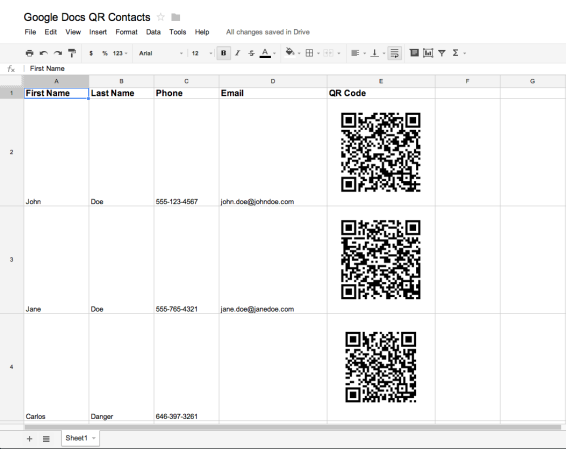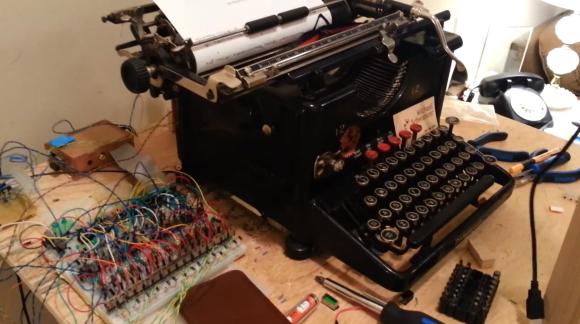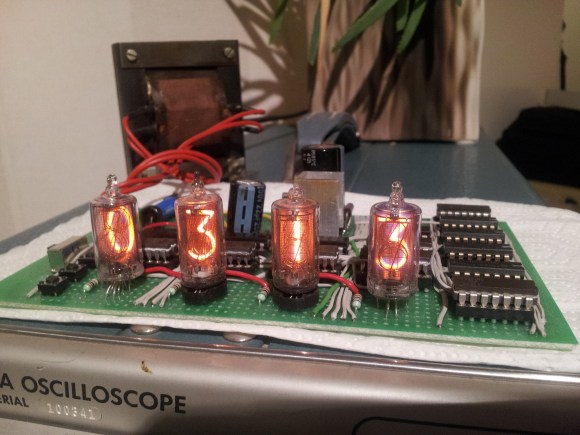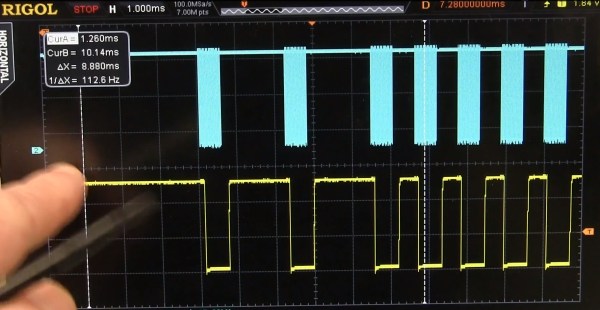
[Kyle] wanted to try something new. A Persistence of Vision Clock using a CD-ROM drive.
We have covered lots of POV Clocks that make use of hard drives, but we think this is the first time we have seen a CD-ROM drive used instead. [Kyle] points out that CD-ROM drives are typically much quieter than hard drives, which is the main reason he chose the CD-ROM route.
At the heart of this project is a good old ATMEGA168 and an RGB LED strip for the lights. To measure and maintain the rotational speed of the clock [Kyle] used an IR photodiode that detects a reference mark on the disc. An elegant build of a classic POV Clock, with a new twist!
The cool thing about this project is he did not actually use the CD-ROM drive like you think he would — he chucked the spindle motor and instead is spinning the disk using the tray ejection motor! He did this so he could control the motor by PWM straight off the microcontroller, whereas the spindle motor would require an IC and a varying control signal with specific voltage amplitudes.
He also experimented with different backgrounds and background lighting, which you can see in the video after the break!
















